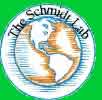







Web Links
Isolation and phylogenetic identification
of a dark-septate fungus associated with the alpine plant Ranunculus
adoneus
Christopher W. Schadt, Renée
B. Mullen and Steven K. Schmidt
Summary
- Dark-septate endophytic (DSE) fungi are ubiquitous in the roots of Arctic and alpine plants, yet very little is known about their phylogenetic identities or effects on their host plants.
- Several such fungi were isolated from the alpine snowbed plant Ranunculus adoneus in the Front Range of Colorado, USA; one isolate was chosen for detailed study. The ability of this isolate to re-colonize plant roots in pot cultures was assessed, and phylogenetic analyses were performed using small-subunit (SSU), 5.8S and internal transcribed spacer (ITS) 2 ribosomal DNA sequences.
- This isolate had the ability to produce root endophytic structures in pot cultures similar to those reported from other sources and observed in R. adoneus roots. SSU phylogenetic analyses showed this isolate to be related to a clade within the Euascomycetes containing the Leotiales adn Erysiphales. In addition, SSU and 5.8S-ITS2 sequences showed high phylogenetic similarity to a variety of isolates reported from other plnats of diverse geographical origins. Although most of these isolates remain unidentified, one closely related isolate was the anamorphic taxon Phialophora gregata.
- The results suggest that this DSE isolate might belong to the fairly closely related group of plant endophytes that have varied effects on the plants that they inhabit.
New Phytologist (2001) 150: 747-755